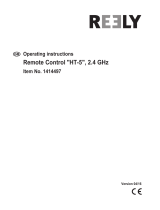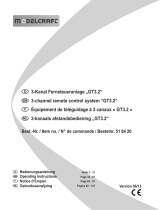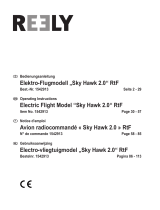
2
Table of Contents
Page
1. Introduction .......................................................................................................................................................... 3
2. Explanation of Symbols .......................................................................................................................................3
3. Intended Use .......................................................................................................................................................4
4. Product Description .............................................................................................................................................4
5. Scope of Delivery .................................................................................................................................................5
6. Safety Notes ........................................................................................................................................................5
a) General ..........................................................................................................................................................5
b) Operation .......................................................................................................................................................6
7. Battery and Rechargeable Battery Notes ............................................................................................................7
8. Charging Rechargeable Batteries ........................................................................................................................8
9. Operating Elements of the Transmitter ................................................................................................................ 9
10. Setting up the Transmitter ..................................................................................................................................10
a) Inserting the Batteries ..................................................................................................................................10
b) Switching on the Transmitter .......................................................................................................................10
c) Setting the Control Stick Length .................................................................................................................. 11
11. Setting up the Receiver .....................................................................................................................................12
a) Connecting the Receiver .............................................................................................................................12
b) Mounting the Receiver .................................................................................................................................14
12. Installing the Servos ..........................................................................................................................................15
13. Setting the Trim ..................................................................................................................................................16
14. Checking the Servo Directions of Travel ............................................................................................................17
15. Switching the Servo Directions of Travel ...........................................................................................................18
16. Conversion of the Control Lever Functions .......................................................................................................19
17. Changing the Control Lever Allocation ..............................................................................................................20
18. Mixer Function ...................................................................................................................................................21
19. Switching the Digital Code ................................................................................................................................. 25
20. Binding Function ................................................................................................................................................ 26
21. Simulator Function, Student Transmitter Function .............................................................................................27
22. Maintenance and Care ......................................................................................................................................27
23. Troubleshooting .................................................................................................................................................28
24. Disposal ............................................................................................................................................................. 29
a) Product ........................................................................................................................................................29
b) Batteries/Rechargeable Batteries ................................................................................................................29
25. Declaration of Conformity (DOC) ....................................................................................................................... 29
26. Technical Data ...................................................................................................................................................30
a) Transmitter...................................................................................................................................................30
b) Receiver ......................................................................................................................................................30






























